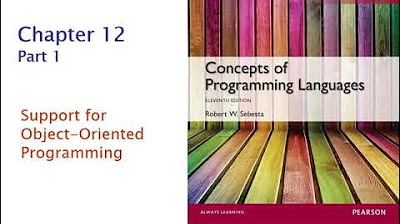David W.C. MacMillan: Nobel Prize lecture in chemistry 2021
Summary
TLDRDavid MacMillan's lecture delves into the world of asymmetric organocatalysis, a field he pioneered. He explains the significance of catalysis in daily life and industrial processes, the importance of asymmetry in molecular reactions, and the innovative approach of using organic molecules as catalysts. MacMillan's journey from his PhD to becoming a distinguished professor at Princeton is highlighted, along with the groundbreaking experiments and discoveries that have positioned organocatalysis as a key player in sustainable chemistry and its applications in creating perfumes, recyclable plastics, and life-saving medicines.
Takeaways
- 🎓 David MacMillan was born in Scotland in 1968 and obtained his PhD from the University of California, Irvine in 1996. He is now a distinguished professor at Princeton University.
- 🏆 MacMillan expresses gratitude to the Royal Swedish Academy of Sciences and the Nobel Committee in Chemistry, acknowledging the significance of the Nobel Prize and congratulating co-recipient Benjamin List and other laureates.
- 🔍 The script introduces the concept of 'asymmetric organocatalysis' by breaking down the term into 'catalysis', 'asymmetric', and 'organo', highlighting their importance in chemistry.
- ⛰️ Catalysis is described as a process that lowers the energy barrier for chemical reactions, making them easier, faster, and enabling new reactions to occur.
- 🌱 The impact of catalysis on the world is vast, including its crucial role in the production of food through the conversion of nitrogen to ammonia, which is essential for sustaining the global population.
- 🔄 Asymmetric catalysis is crucial in creating one mirror image of a compound over another, which is important in medicine where different mirror images can have different effects on the body.
- 🧪 The term 'organo' in catalysis refers to the use of organic molecules as catalysts, which are often inexpensive, safe, sustainable, and recyclable, contrasting with the use of metals.
- 💡 MacMillan's 'eureka' moment during his time at Harvard led to the development of the concept of organocatalysis, using organic molecules as catalysts instead of metals.
- 🌟 The success of organocatalysis is attributed to its ability to be a generic activation mode, applicable to a wide range of chemical reactions, not just one.
- 🌱 The script highlights the interdisciplinary nature of organocatalysis, merging with other fields such as photoredox catalysis to create sustainable chemical reactions powered by visible light.
- 🌐 Organocatalysis is presented as a democratizing force in catalysis, making it accessible and affordable for researchers worldwide, regardless of their country of origin.
Q & A
Who is David MacMillan and what is his current academic position?
-David MacMillan was born in 1968 in Bellshill, Scotland. He obtained his PhD in 1996 from the University of California, Irvine. He is currently the James McDonald Distinguished University Professor at Princeton University in the United States.
What notable award did David MacMillan receive in 2021?
-David MacMillan received the Nobel Prize in Chemistry in 2021.
What is asymmetric organocatalysis?
-Asymmetric organocatalysis is a type of catalysis that uses small organic molecules to accelerate chemical reactions while selectively producing one mirror image (enantiomer) of a molecule over the other.
Why is catalysis important in chemical reactions?
-Catalysis is important because it makes chemical reactions easier and faster by lowering the energy barrier required for the reactions to occur, allowing new chemical reactions to take place that otherwise might not happen spontaneously.
How does catalysis impact the global population?
-Catalysis impacts the global population by enabling the production of ammonia from nitrogen, which is essential for creating fertilizers that help sustain the food supply for the world's population. This catalytic reaction supports the nutrition of roughly 50% of the world's population.
What are the two major branches of asymmetric catalysis that existed before organocatalysis?
-The two major branches of asymmetric catalysis before organocatalysis were biocatalysis, which uses enzymes from living systems, and metal catalysis, which uses metals to produce one mirror image selectively.
What was David MacMillan's eureka moment related to organocatalysis?
-David MacMillan's eureka moment occurred when he realized that organic components of catalysts, specifically enamines, could be used to catalyze chemical reactions without the need for metals, leading to the development of organocatalysis.
What is the significance of the imidazolenones in MacMillan's research?
-Imidazolenones were significant in MacMillan's research because they were inexpensive, made from natural building blocks, and effective in catalyzing reactions to produce one enantiomer over the other, achieving over 90% enantiomeric excess.
How has organocatalysis impacted the production of perfumes and plastics?
-Organocatalysis has been used to produce perfumes such as Lily of the Valley and rose-smelling perfumes. It also plays a role in making plastics recyclable by breaking down polymers into monomers that can be reused, contributing to a more sustainable plastic economy.
What potential future applications does organocatalysis have?
-Future applications of organocatalysis include making pharmaceuticals, materials, and chemicals in a more sustainable and efficient manner. It is expected to play a significant role in creating sustainable technologies for an expanding global population.
Who are some of the key individuals and groups David MacMillan acknowledged in his lecture?
-David MacMillan acknowledged his PhD advisor Professor Larry Overman, his postdoctoral advisor Professor David Evans, his research groups at UC Irvine, Berkeley, Caltech, and Princeton, his wife Jean, his children, his mother-in-law Julie, and his siblings Ian and Lorraine. He also dedicated his talk to Carlos Barbas, a pioneer in organocatalysis, and his parents.
Outlines

Cette section est réservée aux utilisateurs payants. Améliorez votre compte pour accéder à cette section.
Améliorer maintenantMindmap

Cette section est réservée aux utilisateurs payants. Améliorez votre compte pour accéder à cette section.
Améliorer maintenantKeywords

Cette section est réservée aux utilisateurs payants. Améliorez votre compte pour accéder à cette section.
Améliorer maintenantHighlights

Cette section est réservée aux utilisateurs payants. Améliorez votre compte pour accéder à cette section.
Améliorer maintenantTranscripts

Cette section est réservée aux utilisateurs payants. Améliorez votre compte pour accéder à cette section.
Améliorer maintenant5.0 / 5 (0 votes)






